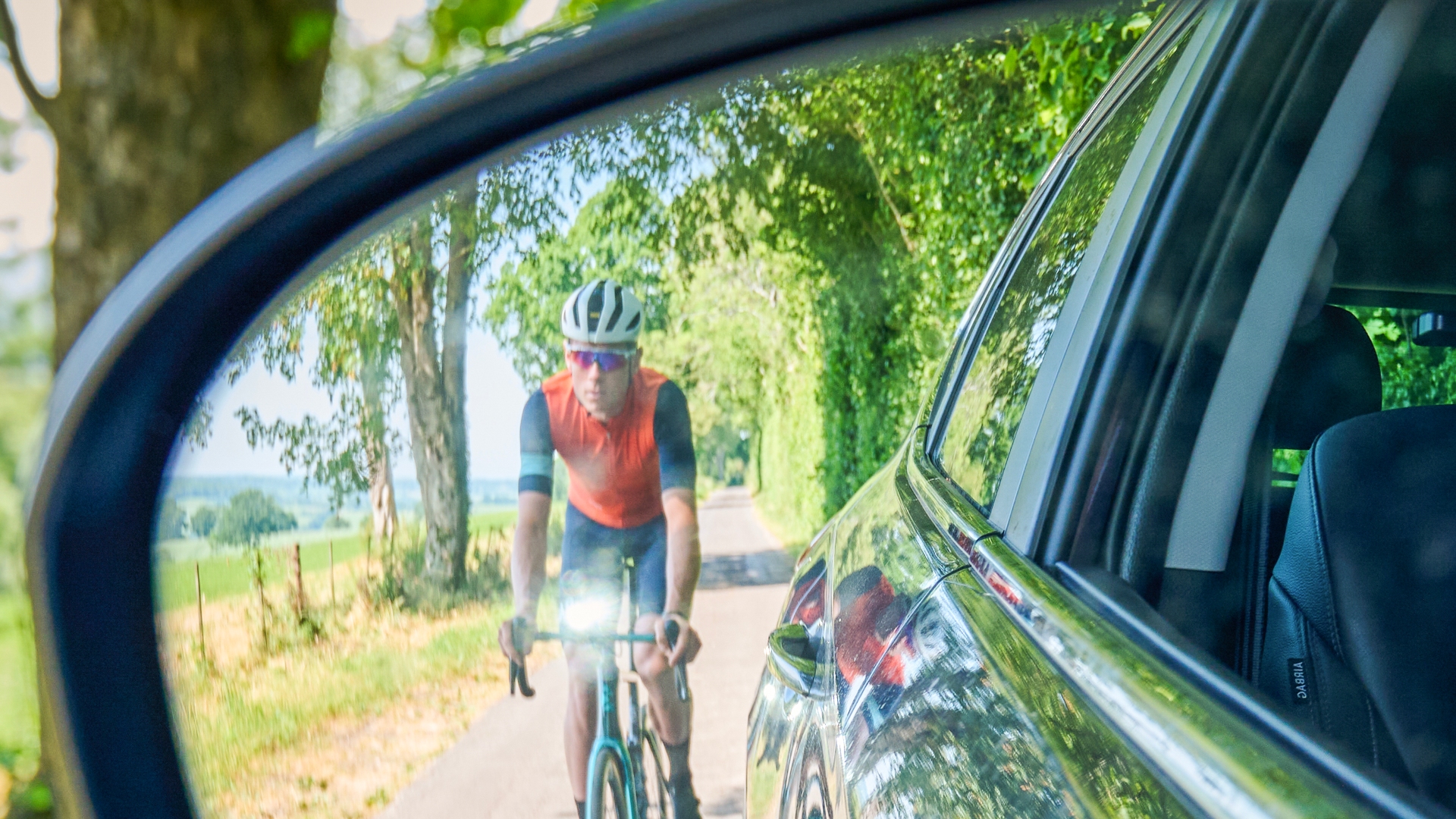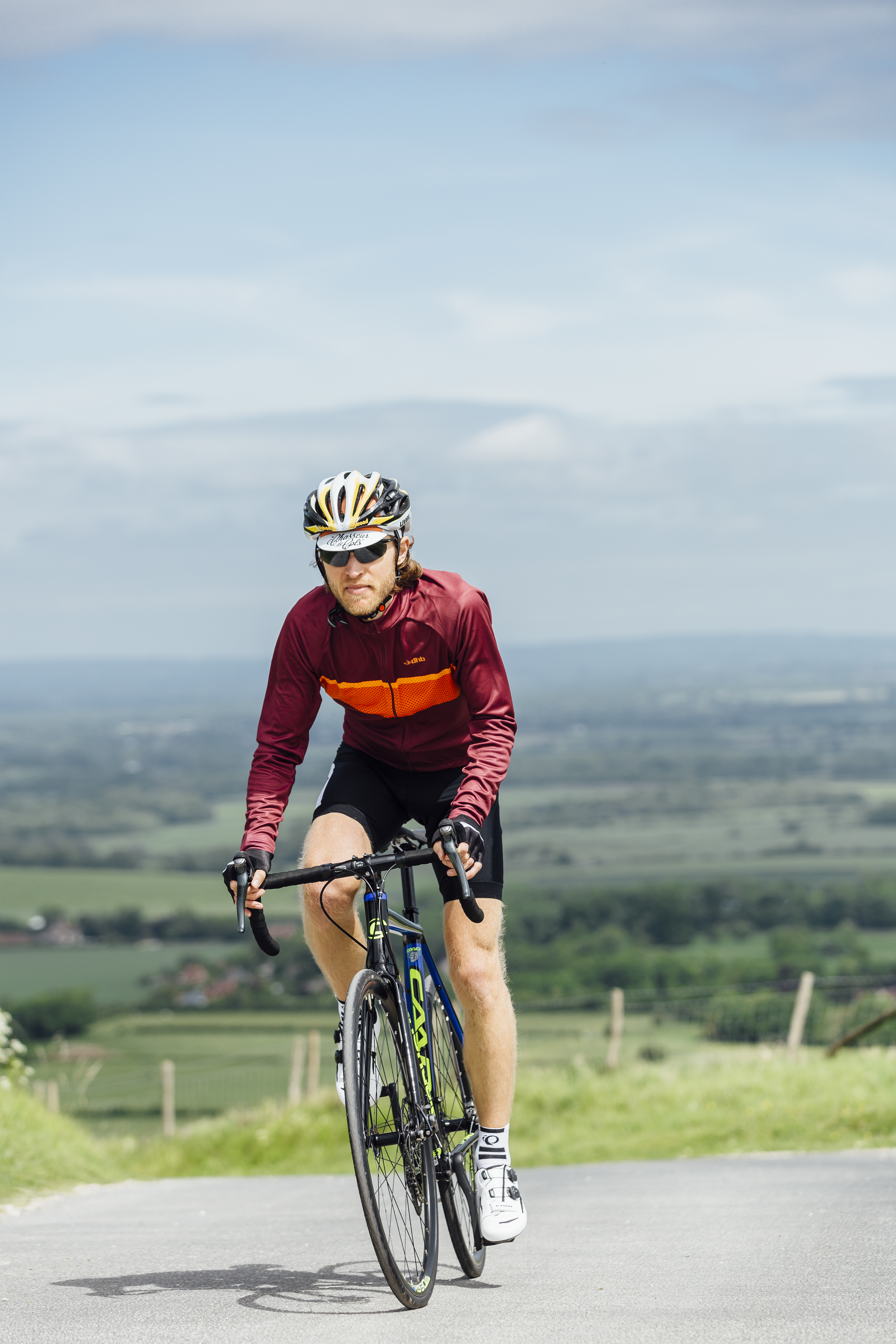
Here’s a fact that might surprise you: as a cyclist you’re almost twice as likely to be killed riding on a rural road than on a busy urban high street. While the clamour for cycle lanes and improved bike safety focuses on the UK’s towns and cities, those taking to the out-of-town byways are left to fend for themselves.
The chocolate box scenery, winding lanes and relative tranquillity of the countryside are what, for many of us, cycling is all about. So what can we do to reap the rewards of rural rides without becoming another statistic?
“Cycling is much safer than many people think it is, and research consistently shows that the health benefits are substantial and significantly outweigh the risks,” that's the take from UK charity, CyclingUK.
The organisation goes on to outline that “over a distance equivalent to cycling 1,000 times round the globe at its widest point: one cyclist is killed, about 20-30 are seriously injured, fewer than 100 are slightly injured.”
Collisions do happen, and every one death or injury is one too many. However, it's important to remember that cycling is a safe activity and casualties are rare.
In September 2023, the government released a report on the number of pedal cyclist accidents resulting in injuries in the UK in 2022. They confirmed that 11,546 were slightly injured, 4,056 seriously injured and tragically, 91 were killed. Taking a longer view, in the period from 2004 to 2022, fatalities were down 32% from 134 to 91, but serious injuries increased by 21%, while cycle traffic had increased by 50%. The big fall in the number of cyclists killed on UK roads is clearly good news, but an examination of the period 2018 to 2022 highlights how 56% of pedal cycle fatalities occurred on rural roads, compared to 29% on urban ones. More worrying still for those of us who love countryside jaunts, accidents on rural roads are around four times more likely to result in a fatality.
Though news headlines often focus on cyclist fatalities in city centres, the number of cycling casualties recorded on rural roads highlights how perilous cycling in the UK countryside has become. Some of the most dangerous roads for cyclists in the UK are the rural A-roads found in Surrey (5,254 casualties reported 2012-2022), Hampshire (4,145) and Kent (3,711). The rural area with the highest incidence of casualties – averaging over 500 a year – spans the Surrey Hills and Box Hill.
“Most rural roads don’t have pavements or cycle paths, yet are used by some of the most vulnerable road users such as people cycling, riding or walking,” says Lucy Straker, campaign manager at road safety group Brake.
“These roads often have poor surface conditions, large potholes and limited or no crash protection, with higher risks from vehicles moving at a variety of speeds from 60mph and higher to slow-moving farm vehicles, along with the dangers from animals, spillages or tree branches.”
Since 2019, Brake has campaigned for a ‘Safe not 60’ speed limit after its own survey of 2,000 drivers found that nearly half had driven faster than the speed limit on a single- carriageway rural road in the past year. Higher speed, according to the medics who treat crash victims, is the key reason why more cyclists are killed on country roads.
“As the speed, and size, of the vehicle increases, the likelihood of major trauma increases,” says Dr David Hulse, consultant in sport and exercise medicine at PureSportsMedicine. “From major head injury, spinal injury, chest and abdominal trauma, and pelvic and long bone fractures, the increased injury severity comes with increased risk of death and of long- term injury consequences.”
Lucy Straker adds context: “At 60mph, a driver’s stopping distance is 73 metres, or about three tennis courts. On rural roads, hazards can appear without warning far closer than that. Speeds under 40mph are far more appropriate for these roads.” Reviewing speed limits on many rural roads could therefore save lives.
“To reduce the risk of head-on collisions, local authorities could reduce speed limits to 40mph on rural roads,” suggests Sarah McMonagle, director of external affairs at Cycling UK, “but just as important as reducing speed limits is providing safe cycling infrastructure in rural areas, not just in towns. We want to see rural towns linked by high-quality cycle routes away from roads or physically separated from traffic,” adds McMonagle. “These key cycle routes need to be maintained, including being cleared of ice and snow in the winter.”
Reducing the risk of severe injury or death for cyclists on rural roads isn’t just a pipe dream. As has been seen on many city streets, a change in focus, shift in priorities, targeted funding and a change of mindset can make a revolution possible. It may not be popular with all – but if it’s preventing even one death on the road, surely the ends justify the means?
According to the European Transport Safety Council, 57% of all reported cyclist deaths in the EU occur on urban roads and 42% on rural roads. When you consider countries such as the Netherlands and Denmark, where city cycling is held up as the pinnacle of best practice, that’s an interesting reversal of the trend in the UK. Of course, not all of Europe’s country lanes are safer than ours. The French Cycling Federation (FFC) reported in 2023 that cycling deaths and injuries have risen by 30% in recent years – with crashes on rural roads accounting for the bulk (60%) of the 244 cycling fatalities recorded in 2022.
CW features editor David Bradford recounts a scary moment as a cautionary tale for rural riders: My most terrifying near-miss happened a couple of years ago on a rural lane I’d ridden countless times – and it was partly my fault. The corner where it happened is just a slight kink left, but the lane is fairly narrow, with banking and high hedges on both sides – you can’t see what’s coming. The road is slightly downhill, too, so the approach is fast even if you’re barely pedalling.
On this particular day, I was almost at the apex and as the line of sight opened up, an enormous agricultural sprayer filled my view. Its massive tyres were taking up every millimetre of available tarmac, and it was going twice the speed of a normal tractor. Instantly I knew neither of us had time to stop. I grabbed the brakes, my back wheel stepped out, and I desperately scanned for an escape route. The machine’s head-height offside wheel was now mere inches away. Mercifully there was a narrow strip of mud and vegetation between the wheel and the bank, and by pure Darwinian instinct I steered into it, tangling into the bracken and brambles but avoiding a direct impact.
It was a stark wake-up call. All too often we ride within the limits of the predictable – in my case, almost any other hazard around that bend would have been narrow enough or slow enough to unhurriedly avoid. The road-hog sprayer was not on my mental list of possibilities – reminding me that we really do need to expect theunexpected, especially on rural roads.

Check your speed
No one’s going to hold their breath waiting for reduced speed limits, speed humps and rural cycle lanes to become commonplace. Overhauling of the UK’s rural road network to create cycle paths on narrow country lanes would have huge cost implications and would face opposition from conservation and anti-development groups. Instead, cyclists are going to have to take measures of our own to reduce the risk as best we can.
One suggestion – don’t all boo at once – is that cyclists check their speed too. “Improved technology means bikes are becoming faster, bike positions more aggressive, and average speeds higher,” explains Dr Hulse. “The downside of all this is that the margin for error is decreased.” When riding on open roads, safety should be the principal consideration.
An easier win is to assume the worst in all situations and cycle as if motorists haven’t noticed you. Research into the causes of rural road crashes involving a bike and another vehicle found that the most common key contributory factor recorded by the police is ‘failed to look properly’ by either the driver or rider, especially at junctions.
Making yourself as visible as possible to others is a no-brainer here, but in the mixed light and weather conditions typically encountered during a daytime ride in the UK, there’s no one type of clothing that will ensure you’re seen at all times. So, taking up a more prominent riding position - in the centre of the road when in quiet areas or riding side by side with other cyclists – is the advice of regular country lane riders. Also, if you need to stop, wait until you reach a lay-by and not around blind corners or at the top of a hill.
The advice of British Cycling’s former policy manager Nick Chamberlain is to take your lights with you when heading out in the late afternoon or evening. “Also, using them on routes that include long tunnels or sections with overhanging trees will ensure you stand out more.”
Your awareness may just be what saves you from an incident on a country lane.
Perhaps most impactful of all would be for more cyclists to ride rural roads more often. Because of the increased risk, many of us avoid them completely, and as a result, motorists are more likely to drive without expecting to come across cyclists. More cyclists could help to break this vicious circle but, of course, if roads were a little slower and a little safer, more cyclists would do this anyway.







